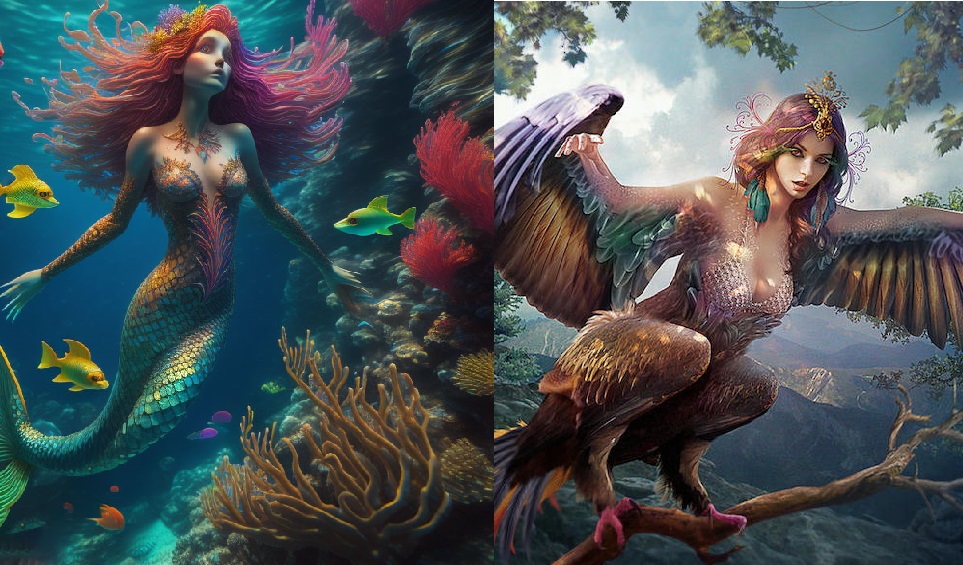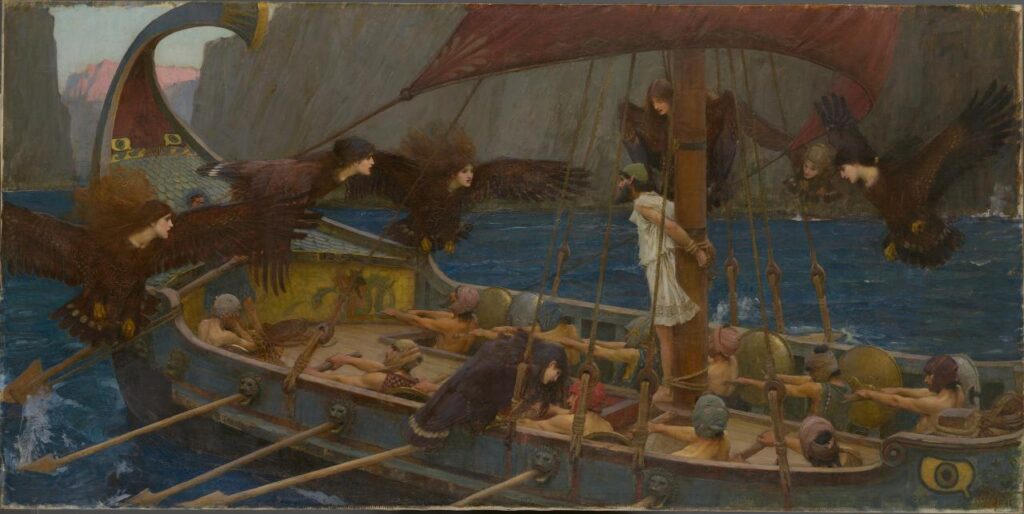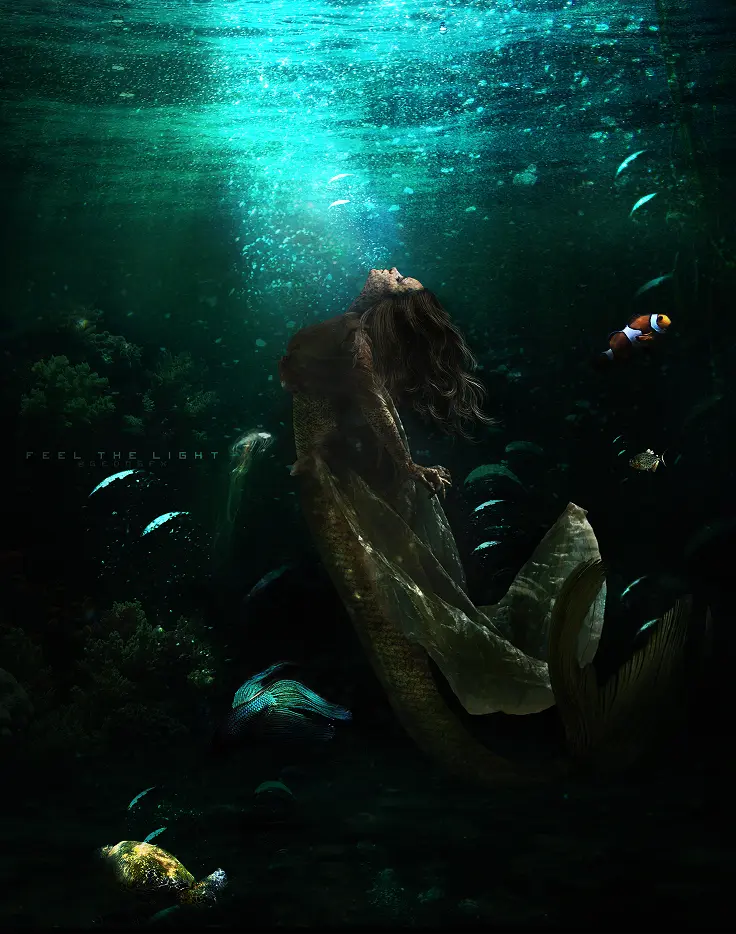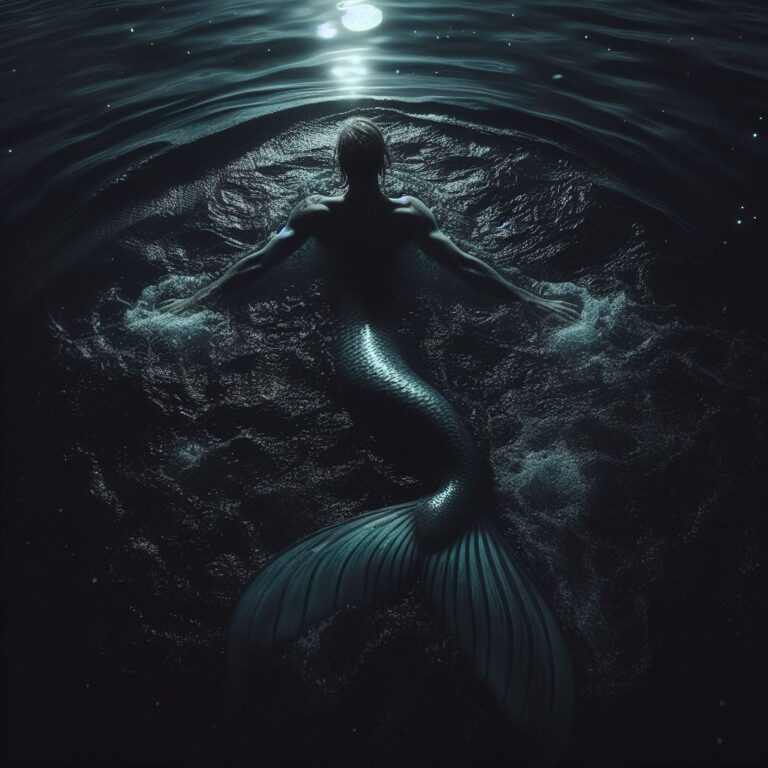
Throughout history, mermaids and sirens have captured the human imagination as magical, mysterious sea creatures. However, there has been much debate over whether mermaids and sirens are actually the same creature.
While they share some similarities, there are important differences between these two mythological beings.
This article will untangle the mythology and folklore behind mermaids and sirens and explore how they are portrayed in pop culture.
Mermaids vs Sirens: Overview

Image credits:deviantart.com
Mermaids stem primarily from European folklore and are depicted as beautiful maiden-like creatures that live in the ocean.
Sirens originate in Greek mythology and were described as dangerous bird-women who lured sailors to their death with an irresistible song.
So while both are associated with the sea, mermaids are seen as benevolent and curious beings, whereas sirens are predatory monsters.
The lines between mermaids and sirens have become blurred in recent pop culture, with hybrid creatures that combine traits of both.
But looking back at the origins and mythology behind each one reveals they were viewed as very distinct sea creatures in ancient folklore and legends.
RELATED : What type of mermaid are you? take this fun quiz!
ads content
Mermaids vs Sirens: Key Differences
Mermaids and sirens have very different backgrounds and depictions in mythology and folklore. Here are some of the key traits that set mermaids and sirens apart:
- Origins: Mermaids originated as benign folklore creatures, while sirens were introduced as dangerous monsters in Greek mythology.
- Appearance: Mermaids are portrayed as stunningly beautiful women with fish tails, while sirens are described as bird-women creatures in mythology.
- Behavior: Mermaids are depicted as curious but harmless, while sirens deliberately seduce sailors with siren songs and lead them to their death.
- Habitats: Mermaids live in the ocean, while sirens inhabited rocky islands and coastlines in Greek myths.
- Abilities: Mermaids can breathe underwater and swim using their tails. Sirens can fly, and their signature ability is their enchanting singing voice.
- Pop culture depictions: Mermaids are portrayed positively in stories like Hans Christian Andersen’s The Little Mermaid. Sirens are dangerous monsters in tales like Homer’s Odyssey.
So while mermaids and sirens both have connections to the sea, their key traits and depictions in traditional mythology set them apart.
Mermaids are benign and beautiful, while sirens are predatory creatures who use their seductive vocals to lure sailors into peril.
![Mermaids vs Sirens: Untangling the Myths 3 mythical creatures art Mermaid Scented Soy Candle[5 unique scents]](https://mythicalcreatures.blog/wp-content/uploads/2023/11/80302-1024x1024.jpg)
Mermaid Scented Soy Candle[5 unique scents]
Mermaid Mythology and Folklore

To dig deeper into the mermaid vs siren distinction, it’s helpful to trace the origins of mermaid mythology and folklore.
- The earliest mermaid tales can be traced back to ancient civilizations like Assyria, Babylon, and Greece.
The Babylonians had a goddess called Atargatis who was depicted as a woman with a fish tail. - Mermaid stories became extremely popular during medieval times.
They were seen as omens, both good and bad. Some were portrayed as benevolent beings who fell in love with humans, while others were depicted as omens of storms, floods and other disasters. - There have been many reported mermaid sightings and experiences over centuries.
Christopher Columbus even reported spotting mermaids on his voyage to the New World. - Mermaids are symbolic of magic, mystery and the allure of the ocean.
They represent both beauty and danger, as well as the transition between the known and unknown. - One of the most famous mermaid tales is “The Little Mermaid” by Danish author Hans Christian Andersen, published in 1837.
This portrayed mermaids in a sympathetic way and cemented their image as benevolent sea creatures.
So the mermaid myth stems from centuries of maritime folklore, superstition and claimed sightings, portraying them as ocean nymphs that provoke both enchantment and fear.
ads content
Siren Mythology and Folklore

Image credits:deviantart.com
Sirens have a very different origin story rooted in Greek mythology.
- Sirens first appeared in Homer’s Odyssey as creatures with the bodies of birds and the heads of women who lured nearby sailors with their irresistible songs.
- According to Greek myths, sailors who heard the sirens’ song became so enchanted they steered their ships toward rocky shores, leading to their demise. Odysseus was one of the only heroes able to resist their songs by having his men tie him to his ship’s mast.
- The sirens promised they would reveal secrets about the future and the past if sailors could survive their song. But no man ever did.
- Sirens were believed to inhabit rocky islands and coastlines from which they would lure passing sailors.
- They became symbols of temptation, dangerous knowledge, forbidden desire and the perilous nature of passion and lust.
So sirens were clearly sinister figures from Greek legend, directly contrasting the more benevolent mermaid of maritime folklore.

Mermaid Stainless Steel Travel Mug
Mermaids in Pop Culture

Image credits: Pirates of the Caribbean
Mermaids have been widely featured in pop culture, often portrayed as benevolent, kind or even romantic figures.
- In J.K. Rowling’s Harry Potter series, merpeople live peacefully under the Great Lake near Hogwarts castle. They coexist happily with humans.
- The Little Mermaid from the 1989 Disney movie is kindly and curious with her fascination about humans. She falls in love with a human prince and makes a sacrifice to try to be with him.
- Pirates of the Caribbean features sympathetic mermaids who are wrongfully hunted by unscrupulous sailors.
- Mermaids remain a popular subject for art, photography and cinematic works. They represent beauty, mystery and imagination.
So mermaids in pop culture retain the benevolent depiction from folklore rather than the deadly sirens of Greek myth.

Hooded Pirate Mermaid Blanket
Sirens in Pop Culture

Ulysses and the Sirens by John William Waterhouse (1891) NATIONAL GALLERY OF VICTORIA PUBLIC DOMAIN
In contrast, sirens are still portrayed as dangerous creatures in modern pop culture works.
- In Homer’s Odyssey, Odysseus escapes the clutches of the sirens by having his sailors plug their ears and tie him to the ship’s mast. This remains one of the most famous siren myths.
- Sirens appear in the Harry Potter series as seductive bird-like creatures that attempt to lure wizards to a watery death.
- The Coen Brothers’ film O Brother Where Art Thou features siren characters based directly on Greek myths who almost devour the heroes.
- Sirens remain symbolic of lethal temptation and seduction in many books, shows and movies. Their bird-woman appearance and enchanting vocals are key traits.
So pop culture depictions of sirens continue to draw from their origins as devious temptresses in Greek mythology.
Mermaids vs Sirens in Pop Culture
Despite their very different backgrounds, mermaids and sirens are sometimes blended together in modern pop culture:
- Some stories feature sea creatures called “mermaids” but which have siren-like qualities of seducing sailors with songs.
- Hybrid “mer-siren” creatures appear, combining the beautiful mermaid tail with the siren’s dangerous vocals and predatory behavior.
- So the two mythological sea creatures aren’t always clearly distinguished. Storytellers may pick and choose different aspects of each legend.
This blurring of the lines is very different from the clear distinction between gentle mermaid and deadly siren originally found in the mythology and folklore.
Frequently Asked Questions about Mermaids and Sirens
Are mermaids and sirens the same?
No, mermaids originate from European folklore as benevolent sea creatures, while sirens were introduced in Greek mythology as bird-women who lured sailors to their death. They have very different origins and behavior.
Do mermaids really exist?
There is no scientific evidence that real mermaids exist. But legends, myths and claimed sightings of mermaid-like beings go back thousands of years across many cultures.
Where do sirens come from?
Sirens originated in ancient Greek mythology, especially Homer’s Odyssey, as bird-women monsters who seduced sailors with enchanting singing.
What do sirens look like?
In Greek myths, sirens were originally described as creatures with the heads of beautiful women but the bodies of birds. They differed greatly from the fish-tailed mermaid image.
Can mermaids live out of water?
According to most mermaid legends, they live exclusively underwater. But in some modern fictional depictions, mermaids can magically transform their fish tails into legs and live on land.
Conclusion

Image credits:deviantart.com
While mermaids and sirens are both mythical sea creatures, they have very different origins and characteristics.
When looking beyond pop culture to the history behind each legend, mermaids are benevolent beings from maritime folklore, while sirens are predatory creatures from Greek mythology.
However, some modern fictional works have blurred the lines between the two and drawn inspiration from both myths.
The contrast between gentle mermaid and deadly siren persists as these legends continue to evolve and fascinate us.







This article about Mermaids v SIRENS IS COMPLETELY INCORRECT! MERMAIDS WERE SEEN LONG BEFORE THE ODYSSEY BY HOMER WAS WRITTEN. MAPS OF THE FLAT WORLD HAD MERMAIDS DRAW ON THEM. THE SIRENS DEPICTED HERE ARE HARPIES, NOT SIRENS. SIRENS ARE THE SAME IN LOOKS AS MERMAIDS, BUT ARE MALEVOLENT. THEIR BEAUTIFUL SONG DRIVES MEN MAD, THEY SAIL THEIR SHIPS TO A ROCKY END AND EAT THE FLESH OF THE MEN WHILE STEALING ANY JEWELS OR SHINY THINGS THEY FIND. THIS WAS ALL WRITTEN 400-300 B.C.! THE MOST IMPORTANT THING TO REMEMBER IS THAT THEY AREN’T REAL! NOT IN THE WAY WE FANTASIZE.